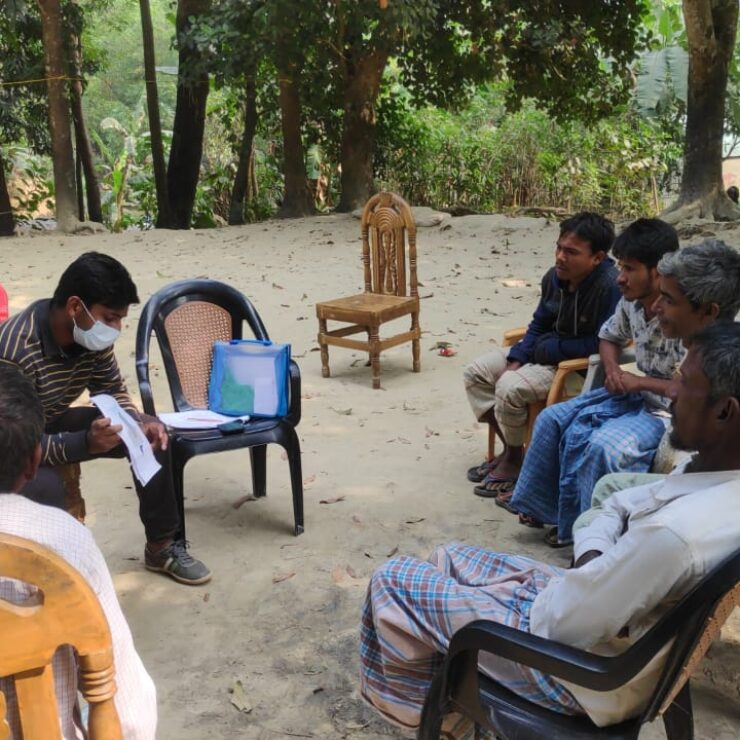
Addressing the Socio-economic Challenges of Cox’s Bazar: An Integrated Response to the COVID-19 Crisis
Background
Cox’s Bazar is one of the lagging districts of Bangladesh. Back in 2020, when the COVID-19 pandemic was wreaking havoc on the nation, a nationwide lockdown was implemented. Cox’s Bazar, which was already experiencing many socio-economic challenges due to the Rohingya influx, meanwhile, tourism in Cox’s Bazar was suspended by the city’s authorities as a result of the lockdown. The consequence was that many children working in the tourism sector were unable to make a livelihood. It made them more susceptible to violence and abuse by family members and online abusers, as well as being deprived of access to health care and educational opportunities, increasing their chances of early marriage, and so on. To address this issue, a project titled ‘Integrated response to COVID-19 crisis through strengthened healthcare, child protection and education services’ was implemented with the aim to provide access to quality humanitarian assistance through integrated health, protection and education services to minimize the adverse impacts of COVID-19. An end-line evaluation of the project was conducted by Inspira with the purpose of assessing the projects’ relevance, effectiveness, efficiency, and sustainability in line with the OECD/DAC evaluation criteria.
Our Approach
Both primary and secondary data was used in the assessment technique. A mixed method was applied whereas both quantitative and qualitative tools were taken into consideration. A household survey was executed in both the Rohingya and Host communities to operationalize the quantitative analysis. Qualitative data was collected through mii Focus Group Discussions with beneficiaries as well as Key Informant Interviews with a representative sample of internal and external stakeholders. A desk research was also conducted by the evaluation team to collect secondary data.
Project Outcome
In terms of relevance, beneficiaries believed that the activities by Save the Children were highly relevant and suitable to the communities’ food security and child protection requirements. Involving many sectors and local stakeholders in the response strategy resulted in a more accountable and child-protective community.
In terms of ‘Effectiveness’, SCI’s interventions have boosted the well-being of children and adolescents as well as the attitudes and behaviors of parents and other caregivers. SCI was able to meet its objective of 80% since the survey results showed that 87% of the children and caregivers were satisfied with the case management service provided by SCI. Results from a study on well-being among young people indicate that 96 percent (children and adolescents) describe “normal” psychological conditions, rather than the aim of 80 percent (adolescents). Majority of the parents and caregivers mentioned that they have stopped punishing the children either physically or verbally. In terms of Food Security and Livelihood, around 71 percent of the beneficiaries that received IGA support have reported increased income, against the target of 70 percent.
In terms of ‘Efficiency, the project’s efficiency was hampered due to long delays in acquiring regulatory permissions. The integrated and community-led child protection mechanism has been a successful experiment by SCI.
By participating in capacity building efforts for implementing partners, SCI demonstrated a strong commitment to engaging and strengthening local humanitarian groups and GoB stakeholders. It boosted GoB institutions’ participation such as the Department of Social Service (DSS), local law enforcement agencies, and humanitarian organizations, to solidify the durability of child protection mechanisms in both Rohingya and host communities.
SCI was successful in the inclusion of three types of vulnerable groups – Children with Disabilities, Children and Adolescents and Infants and Young Children alongside other beneficiaries.
SCI maintained coordination amongst various sectors, as well as with humanitarian organizations and municipal and national governments. Except for a few setbacks in collaborating with government actors, the coordination process has been free-flowing among internal and external parties.




